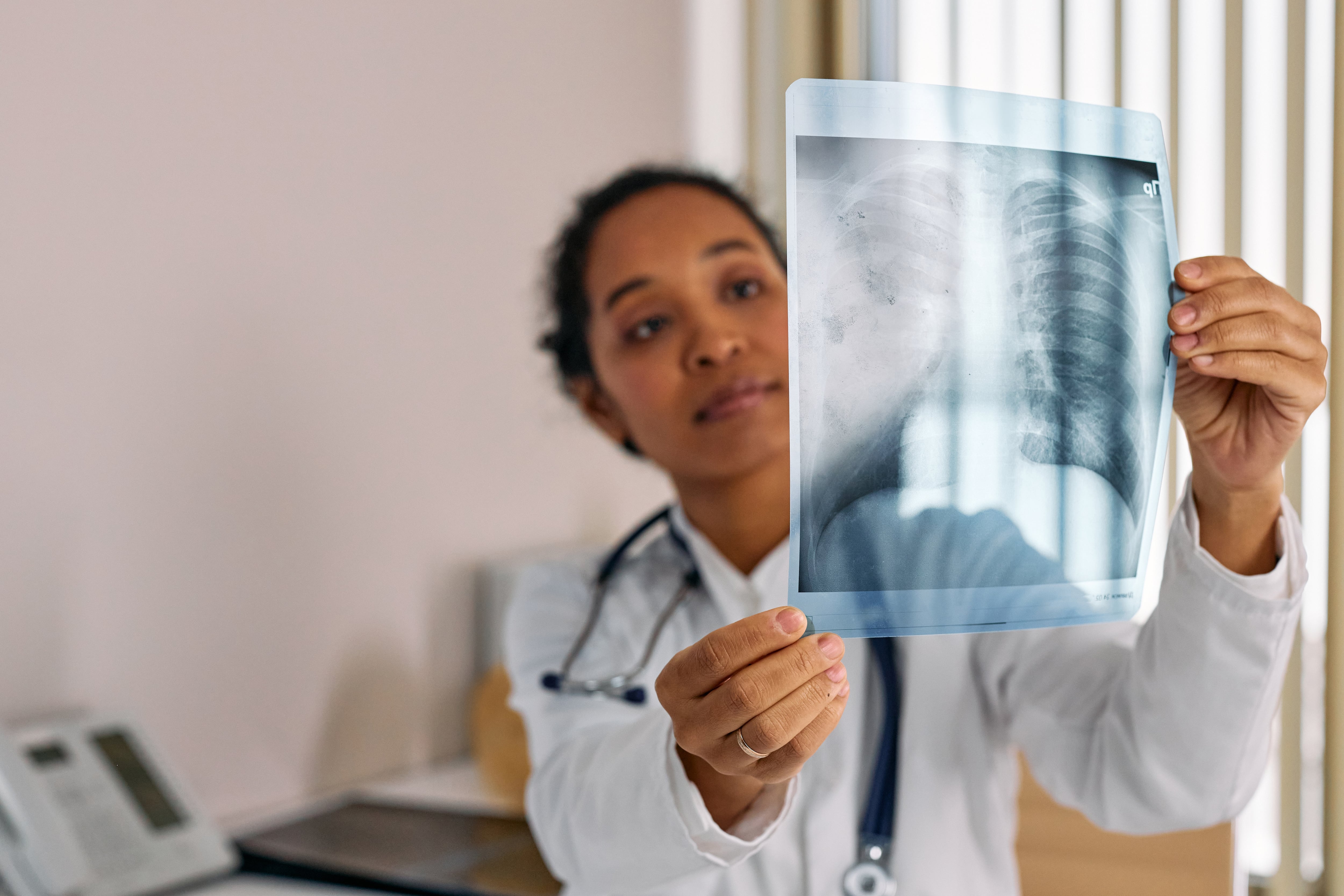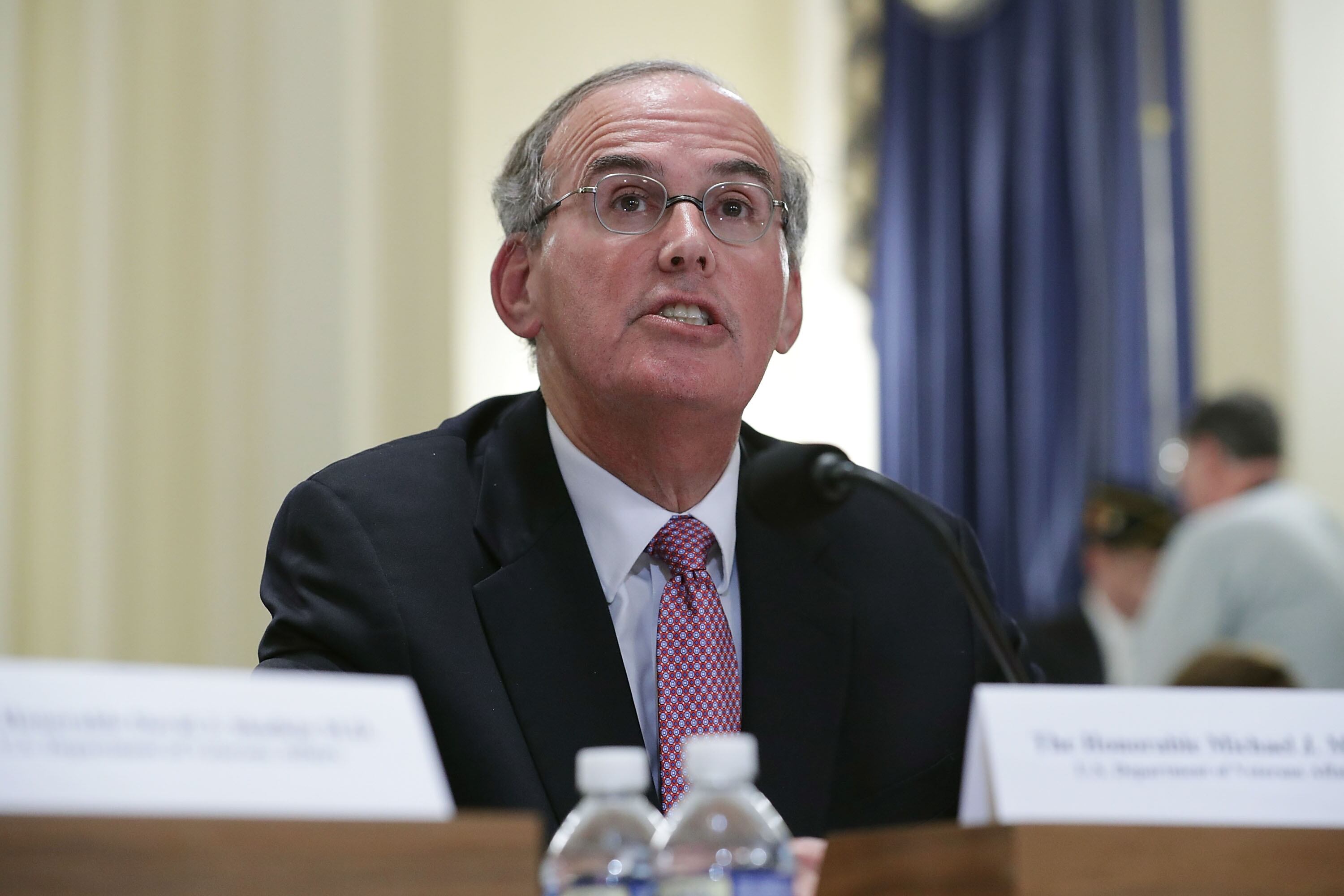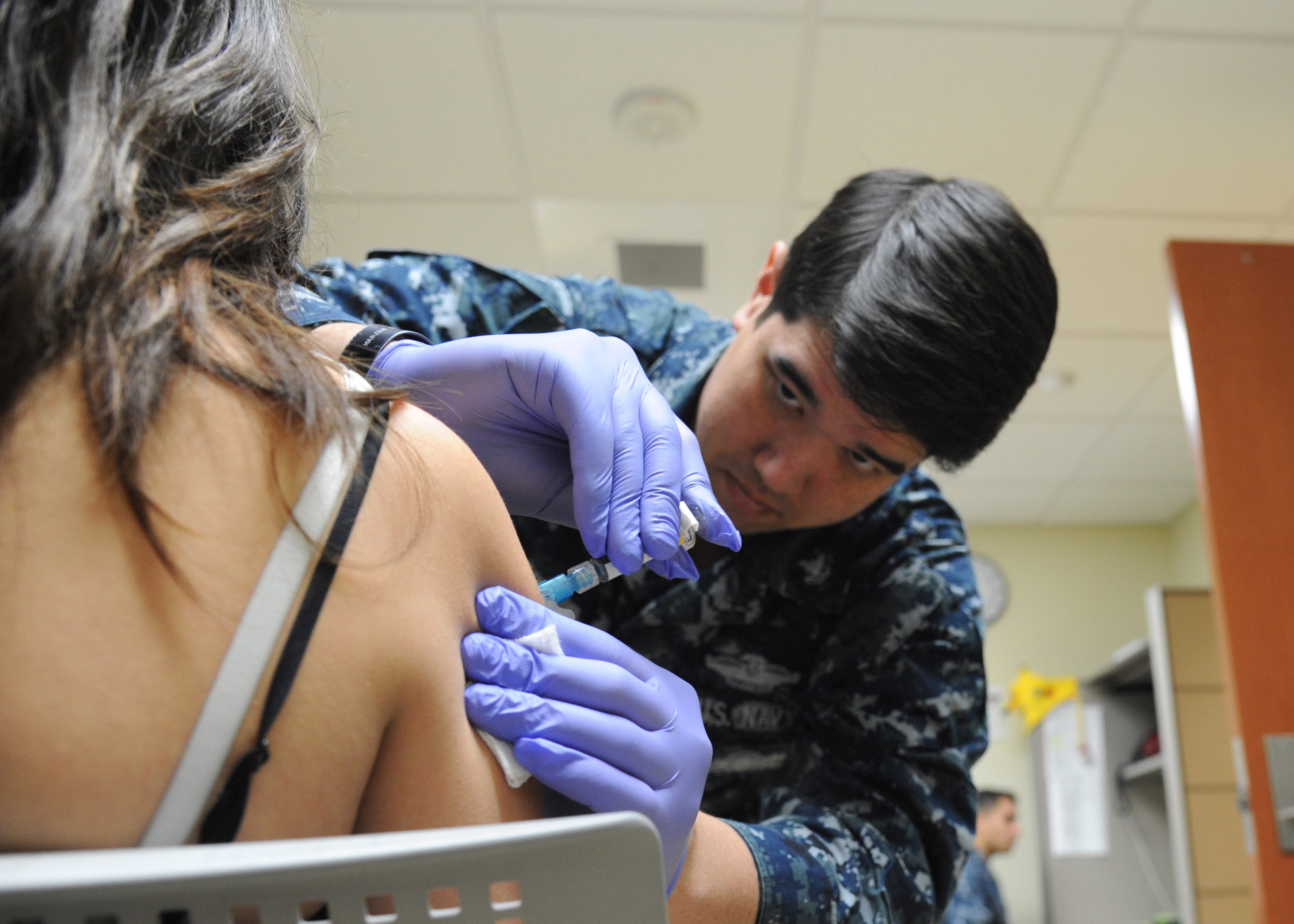Navy medicine faces a long list of challenges: Preparing for the next war. Keeping up with health care technology. Fighting outside pressure to privatize.
These days the big decisions fall to Vice Adm. C. Forrest Faison. The Navy's top doctor sat down with Navy Times on Dec. 3 to talk about how he's modernizing the service's single largest community that includes roughly 60,000 military and civilians on the job.
Navy Times: Where do you see your greatest challenges right now?
Vice Adm. Faison: My main challenge is preserving high combat survival for the next conflict or the next deployment, regardless of where it occurs. ... We are coming out of the nation's longest war with the highest combat survival on record. If you were injured on the battlefield today you have a 97 percent chance of survival — that's unprecedented in the history of warfare. The next conflict, especially for the Navy, may not be a ground war and we may not have the advantages we had in [Operations Iraqi and Enduring Freedom].
Navy Times: Can you give me some examples of these battlefield advantages?
Vice Adm. Faison: There were three main causes of high combat survival in the war.
The first was the heroic performance of our young Corpsman on the battlefield who were able to keep people alive, and then rapidly get them to the second reason.
The second reason was damage control surgery forward, forward resuscitative surgery, taking that surgical team and putting them at the edge of the battle space. This is where the concept of the golden hour or the platinum 15 minutes came from.
The third reason was air superiority and the ability to do air medical evacuation on demand back to Kandahar, Bagram and then ultimately to Europe and the United States. So, when we had casualties, those casualties were attended to right away and we had rapid evacuation and seamless continuity from injury to definitive treatment.
Navy Times: How do you prepare for unknown future wars and contingencies?
Vice Adm. Faison: In another conflict, especially say one at sea, we've got to make sure the training we give our medical folks — in what may be a very different environment — will allow us to take advantage of our recent success to optimize survival in a very different environment.
We're partnering with the Fleet and Fleet Marine Force to continually assess capabilities in our sick bays and aid stations and the medical footprint on a particular ship or with a particular unit when it deploys to ensure we have the right personnel and capability to preserve health and, if needed, save lives.
We just completed an exercise with the Pacific fleet to look at health service support and the optimal medical laydown for different environments. That exercise is helping us identify how best to provide medical services in a variety of different settings and circumstances for the future, regardless of where we may be called to serve. We are looking at those results hard and [to] help inform future decisions.
Also, I put together a task force earlier this year to look at the training we're giving our corpsman in A school. It's phenomenal training but I want to make sure not only are we training for operations ashore, as we did in the last conflict because we also support the Marine Corps, but that we are also training them to function in different environments and care for different types of casualties or patients that can occur in those environments so they will continue to be well-prepared wherever our Navy or Marine Corps operates in the future.
Navy Times: How will corpsman training change?
Vice Adm. Faison: We'll look at giving them basic skills to sustain life, to provide casualty stabilization for extended periods of time. They didn't really have to do that [in Iraq and Afghanistan] because we got the patients out of there so quickly. We want to make sure our corpsmen are well prepared to be able to take care of and keep alive casualties until we can get them to definitive care. We're also teaching them about caring for different conditions they didn't see in OIF/OEF like lung damage from intense heat or smoke, chemical burns, exposure, and other conditions they might see under different circumstances.
Navy Times: How will you accomplish that?
Vice Adm. Faison: All corpsmen currently graduate A school with outstanding training, but limited hands-on clinical experience. Most of their training is simulation based. But, just as you wouldn't take a new aviator directly from a flight simulator to a carrier squadron, our Corpsmen need real hands-on clinical experience before they go to an operational or remote assignment. As such, we're working to ensure that our Corpsmen go to a hospital after their training to get some real clinical experience under their belts. ... The first time they see a really sick patient shouldn't be on the battlefield or at sea.
Our commitment to American families is that we will do all in our power to return home their loved ones who have volunteered to serve our nation. When the call comes for "Corpsman Up" I want to ensure it’s answered with a Corpsman who’s well-prepared and ready to save lives whenever and wherever required. There are three parts to doing that: the right training, sufficient clinical experience to reinforce that training, and the self-confidence to know that they can do the job.
Navy Times: Are you looking to expand the real-life, extended trauma teams training for deploying units such as the training at Los Angeles County Hospital?
Vice Adm. Faison: Absolutely. ... Trauma accounted for 30 percent of the evacuations coming out of OIF and OEF, but successful trauma care is critical to high combat survival. So, we work very hard on our trauma skills and trauma skill sustainment. We've got a great relationship with LA County. We're also looking to expand our partnerships and that's my third priority: growing partnerships to help us in this and other areas. We can't do this alone so we've got to partner with other trauma centers. ... Trauma care and training is not just for the doc, nurse, and Corpsman, but for the entire trauma response: lab and blood bank officers, patient administration, others critical to a successful trauma response.
Navy Times: You've talked about the challenges in war and the fleet — how about dependent and family care at home?
Vice Adm. Faison: This gets into another challenge we're facing ... Who is this force of the Navy today? Well, 75 percent of the Navy was born after 1986. They're millennials, their families are millennials. The millennial generation is fundamentally changing healthcare and how healthcare is delivered.
When I was growing up, we worried about access, quality, and the qualifications of the person caring for us. The millennials assume all of that is good. What drives their healthcare choices today are three factors. First and foremost is convenience. That's the billboards which advertise "come in my ER, the wait time is five minutes." You've seen these signs, they are everywhere. Convenience drives healthcare choice.
Major retailers know this and are getting into this business — 90 percent of the U.S. population lives within ten miles of a Walmart, Target or CVS and others — this includes our sailors and Marines and their families. Many of these retailers have minute clinics in their stores.
Navy Times: Do you worry about sailors and Marines choosing those private-sector options?
Vice Adm. Faison: If our Sailors, Marines, and their families get their care at Walmart today, CVS tomorrow, Target the next day, what happens? Care becomes very fragmented and suboptimal. Further, I'll lose visibility on the health of the force. Both of these are bad at a time when I need to ensure that the force is healthy and I have visibility on their health to ensure they stay healthy and on the job to support our Navy and Marine Corps. What happens when the ship's CO calls me and asks, "Hey doc what's going on with my sailor?" My response can't be, "I don't know, because he's getting his care at WalMart." ...
Further, if those patients go somewhere else, then they're not available as patients for my Corpsmen to get the hands-on clinical experience they need before they deploy. So, we're working very hard to address this.
We've got a pilot that we're doing right now in Jacksonville. About 70 percent of patients going to a primary care clinic doesn't require a physician. If you don't need to see a physician, why are we then making you drive to the hospital, find a parking spot, go into the clinic, sit in the waiting room, see the doc, or wait in the pharmacy? It's an intrusion on your day and, increasingly, the millennials won't do it if convenience is what drives healthcare choice. We've got to change our model of healthcare delivery and the pilot we are doing at Jacksonville will help us determine how best to do that.
We seek ways to push healthcare outside the hospital and integrate it in convenient ways into patients' lives. This includes expanded use of virtual technology and telemedicine. ... So, we're in the very early stages of looking at possible pilots to help us figure out how can we make care more convenient so patients will choose us, so their care won't become fragmented and we'll retain visibility and relevance over the health of the force.
Another factor that drives healthcare is experience of care. You've seen things like valet parking, gourmet meals, concierge services, and the like in civilian healthcare facilities. That all appeals to the experience of care — and are all things I can't spend tax dollars on. Neither would you want me to as a taxpayer.
The downside is that people can confuse the experience of care with the quality of care. Just because you got valet parking doesn't mean you're getting the best care but people can easily and mistakenly make that connection. But, when our patients have more choice than ever, I need to ensure they choose us so we can ensure they are getting great care. We're working hard on the patient experience since it is so influential in patient choice.
Navy Times: How is technology changing Navy medicine?
Vice Adm. Faison: Technology is the other driver of healthcare choice. In our Navy today, 98 percent of our sailors own smartphones … they're an integral part of their lives.
In the iTunes store today, there are over 16,000 health related apps. Most of them are free. Not all went through quality control for medical information, yet many of them are being used by our service members and their families to make important healthcare decisions. The smartphone, not the doctor, is the primary source of medical information today. I've got to be in this environment or I'll lose influence and relevance over the health of the force.
I'll give you an example. Stethoscopes were invented in the 1800's. In one of our fleet areas, one of the [private-sector] health systems gives doctors smartphones instead of stethoscopes. There are two pads on the back of that smartphone. When you put it on the patient's chest, you get heart sounds, you also get an EKG, an ultrasound of the heart, and a screening flow study of how well blood flow is going through the patient's coronary arteries. There's a billboard in that town with a picture of that smartphone and a picture of a pretty ratty stethoscope and the tagline on that billboard is, "Is your doctor using something from the 1800s to take care of you?"
I went and visited these folks on a Wednesday afternoon so my clinics were open, sick bays on the ship and aid stations for the Marines were open. I walked into this place and there were five sailors in uniform getting ready to check in. I asked "what are you doing here?" — which is a little unnerving when a three-star asks that, but they were great sailors. They responded "Sir, they've got these cool phones.' That's driving healthcare choice. So, we've got to be in this environment.
Navy Times: There are those who are advocating out sourcing of military medical care and especially dependent care. How do you feel about that?
Vice Adm. Faison: As we come out of the nation's longest war, there are resource issues and concerns we're facing in our government right now.
There is a great temptation to look at military healthcare through a civilian lens and not understand why we have a military health system. I testified in front of Congress last cycle and someone from one of the think tanks proposed we get rid of the healthcare system altogether, let patients get their care in the civilian sector, put all military medical staff in civilian healthcare facilities and just call them up when we need them because that's what some other nations do and it's very cost effective.
I said, sure, it's very cost effective, but I don't think that's a good idea. Again, we'll lose visibility over the health of the force if they get all their care in the civilian sector. Further, I've spoken with the Surgeon Generals of countries that do that and they've told me they are challenged to get a combat hospital out the door quickly. It takes time to get everyone back together and once you get them together, it takes additional time for them to efficiently function as a team.
I have a medical force right now that I can get out the door quickly, immediately, that trains together, that is prepared, and that has a 15-year proven track record of high combat survival. If we had to deploy tonight, that force is ready and available tonight for a complete and comprehensive medical support capability to care for casualties tonight.
I also told them they have to realize that the ready, rapidly deployable medical force provide more than just combat casualty care quickly. That medical team is a tool for our nation to build partnerships and alliances. As an example, we have strong alliances with some countries in southeast Asia today, in part because of the rapid medical response that occurred when we quickly sent medical teams and then the hospital ship over there to help save lives and provide support to that country after a earthquake and tsunami. Rapid medical support helps build friendships and alliances. We can't lose that tool from our toolbox by looking at military healthcare through a civilian or peacetime lens.
Mark D. Faram is a former reporter for Navy Times. He was a senior writer covering personnel, cultural and historical issues. A nine-year active duty Navy veteran, Faram served from 1978 to 1987 as a Navy Diver and photographer.





